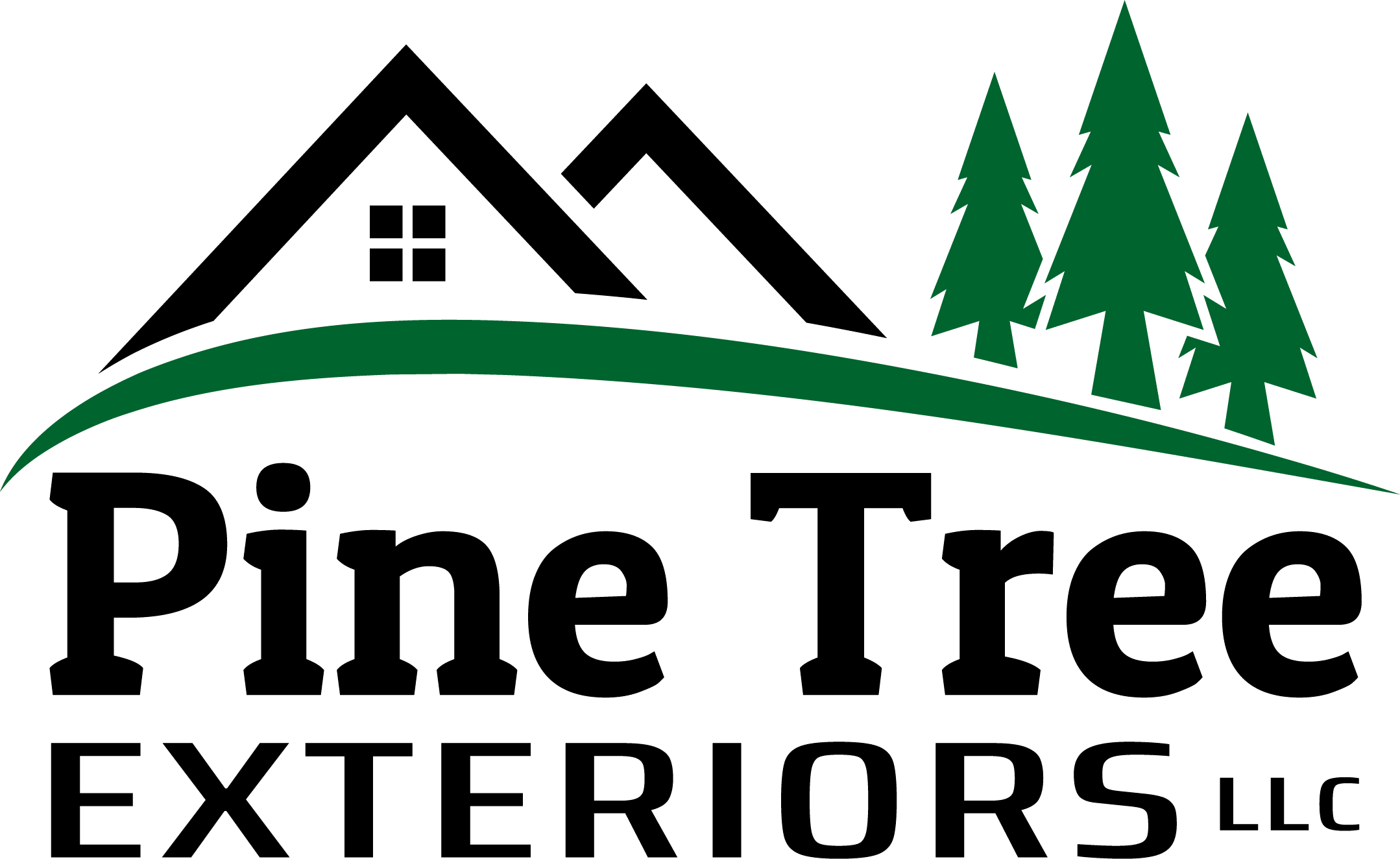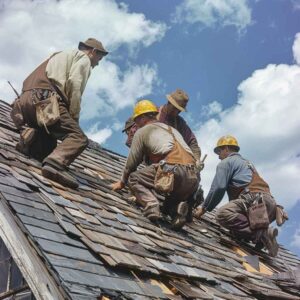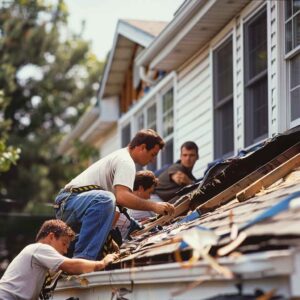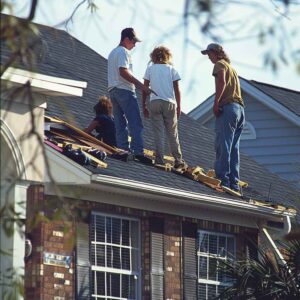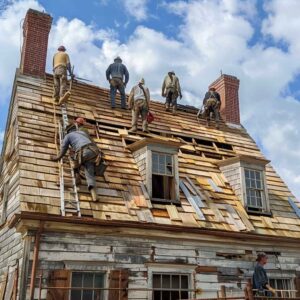Optimizing energy efficiency in our homes has become a top priority in today’s environmentally-conscious world. One often overlooked aspect is the role that roofs play in this endeavor. Selecting the right roof can substantially affect a building’s energy usage, enhancing its environmental sustainability and cost efficiency. With various options, including metal, cool, green, and solar roofs, finding the optimal choice may require some consideration. In this discussion, we will explore the different types of roofs and their potential for energy efficiency, unveiling the secrets to achieving optimal sustainability for your home.
Metal Roofs
Metal roofs are a highly efficient and durable option for homeowners seeking to improve their energy efficiency. The benefits of metal roofs are numerous:
With a high solar reflectance, these roofs can deflect a significant portion of the sun’s heat away from the building. This characteristic is crucial in diminishing cooling expenses and enhancing the structure’s overall energy efficiency.
Metal roofs boast an extended lifespan, often exceeding 50 years, generating less waste and minimizing environmental impact compared to traditional asphalt shingles. The installation process for metal roofs encompasses several stages, commencing with the removal of the existing roof, followed by an inspection and repair of the underlying structure, and concluding with the installation of metal panels or sheets. The roofing project is finalized by a professional roofing team by sealing and finishing to ensure robust durability and weather resistance.
Opting for metal roofs is prudent for homeowners seeking to elevate their energy efficiency and reduce their carbon footprint.
Cool Roofs
Cool roofs present an efficient solution for enhancing energy efficiency and diminishing the heat absorption by buildings. Specifically engineered to deflect sunlight and heat away from structures, these roofs contribute to a decreased reliance on air conditioning and, consequently, lower energy expenditures. Integrating reflective materials in cool roofs plays a crucial role in mitigating the urban heat island effect—a phenomenon wherein cities encounter elevated temperatures attributed to the absorption and subsequent re-emission of heat by buildings and pavements.
By redirecting sunlight and heat, cool roofs actively mitigate the urban heat island effect, fostering a more comfortable environment for both structures and their occupants. Research indicates that implementing cool roofs can significantly reduce roof surface temperatures by up to 50°F, translating to tangible energy savings and an enhanced indoor comfort experience.
Green Roofs
Green roofs are an increasingly popular and environmentally friendly solution for improving energy efficiency and reducing the carbon footprint of buildings. Roofs adorned with vegetation, commonly known as green roofs, offer many advantages. A significant advantage of green roofs lies in their ability to trim energy consumption by providing effective building insulation and reducing reliance on heating and cooling systems. Studies indicate that green roofs can considerably reduce energy usage, potentially saving up to 30%. Additionally, these environmentally friendly roofs combat the urban heat island effect by absorbing heat and providing natural cooling mechanisms.
The installation involves several steps, including waterproofing, a drainage layer, and the growing medium and vegetation. While the installation can be more complex and costly compared to traditional roofs, the long-term benefits make green roofs a worthwhile investment for energy-efficient buildings.
Solar Roofs
Solar roofs present another forward-thinking solution for enhancing energy efficiency and diminishing the carbon footprint of structures. Through the installation of solar roofs, buildings can harness the sun’s power to produce clean and renewable energy. Here are three pivotal advantages of solar roofs:
- Energy savings: Solar roofs empower buildings to generate their own electricity, lessening dependence on conventional power sources and ultimately reducing utility expenses. This results in substantial long-term savings and an augmented sense of energy independence.
- Environmental impact: By harnessing solar energy, buildings equipped with solar roofs actively reduce carbon emissions, contributing to a more sustainable and environmentally friendly future. This proactive approach aids in the fight against climate change and diminishes the overall environmental footprint of the structure.
- Increased property value: Solar roofs are an attractive feature in the real estate market. Buildings with solar roofs tend to have higher property values, making them wise investments for homeowners and commercial property owners.
Incorporating solar roofs into building design and construction can result in numerous economic and environmental benefits.
Insulated Roofs
Insulated roofs are crucial in enhancing energy efficiency and reducing building heat transfer. Through thermal insulation, these roofs contribute to sustaining a pleasant indoor temperature and diminishing the dependence on artificial heating and cooling systems. Incorporating insulation in roofs holds the potential for substantial energy savings, as it effectively mitigates heat transfer into or out of a building. As per the U.S. Department of Energy, adept insulation practices can significantly reduce heating and cooling expenses, with potential savings of up to 20%. Insulated roofs work by preventing heat transfer through conduction, convection, and radiation. They are typically constructed using highly thermal-resistant materials, such as foam or fiberglass, which effectively trap air and minimize heat flow. Installing insulated roofs is a practical and effective solution for improving energy efficiency and reducing energy consumption in buildings.
Elevate Your Home’s Appeal Today!
📞 Call 717-327-1745 for personalized solutions
📍 Visit 340 School Lane Rd., Gap, PA 17527
